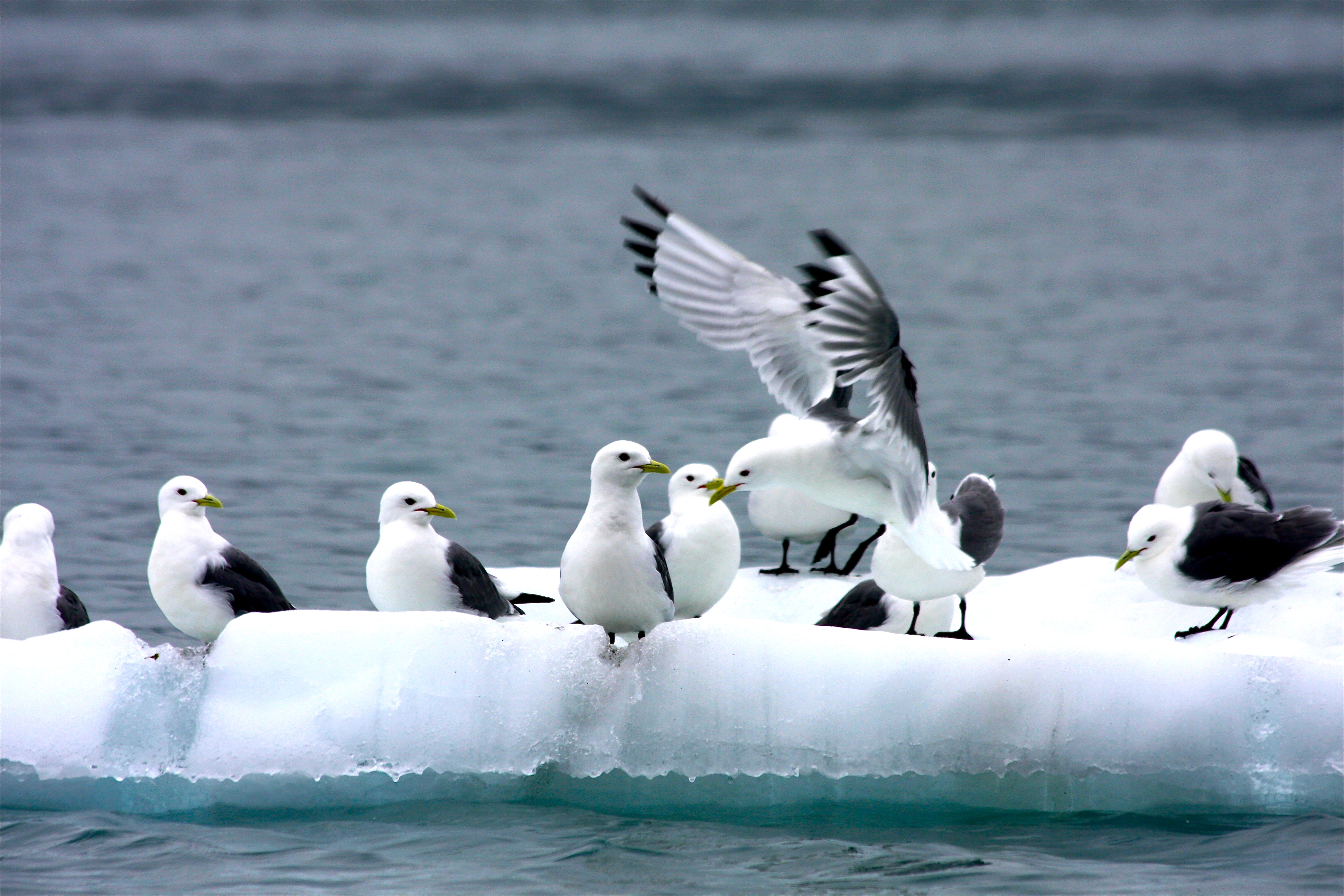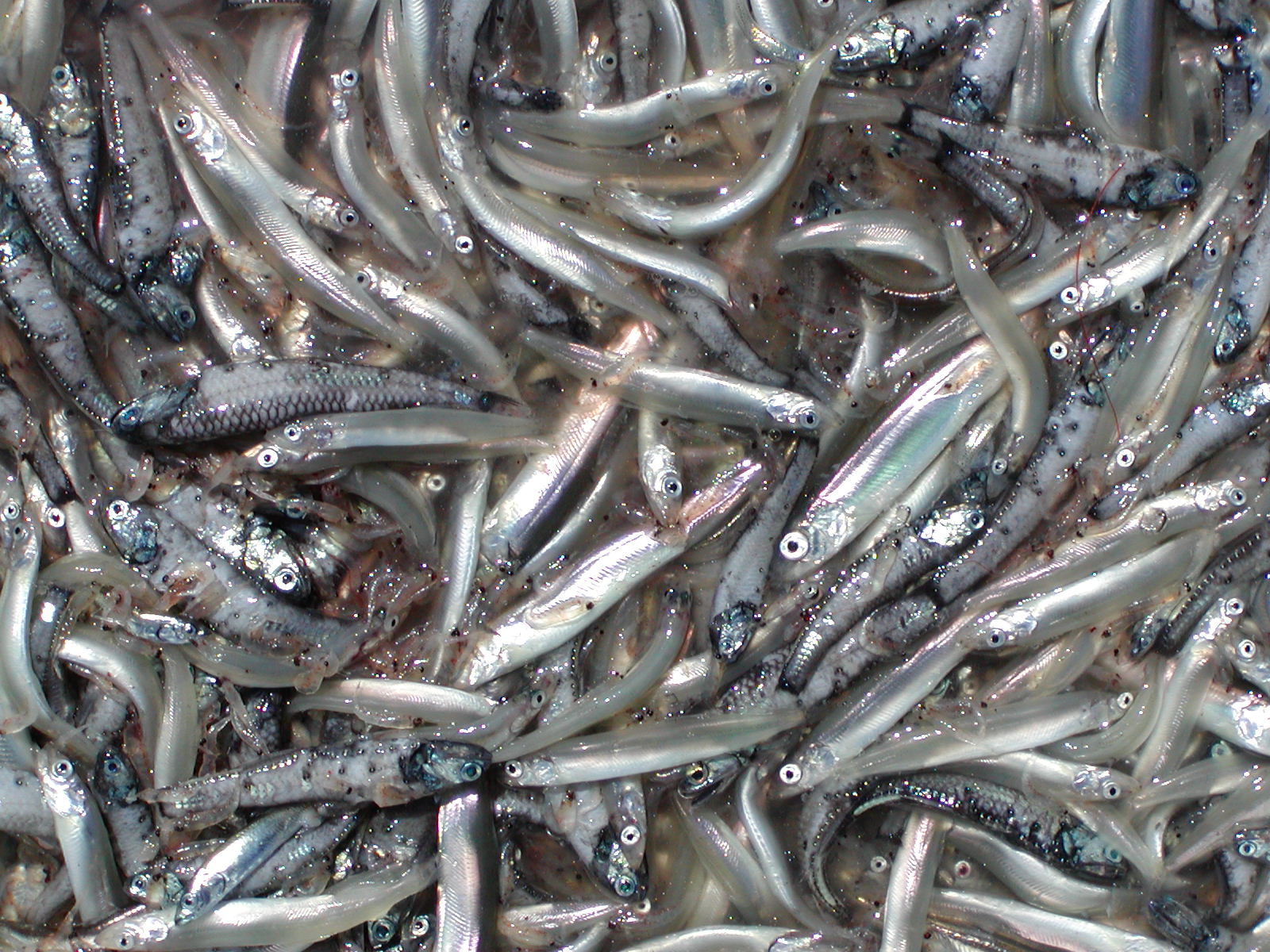
It is and here it is:

Results of a near-surface trawl catch at the head of Tarr Inlet, including krill and small forage fish, such as juvenile capelin and northern lampfish.
The water in front of Margerie Glacier is filled with frill and small forage fish: food for black-legged kittiwakes and other gulls.
Yumi Arimitsu, a Juneau-based researcher, has studied the forage fish in Glacier Bay extensively. She notes that many of these fish are mesopelagic species that are normally found in deep water during the day. However, they are found in the upper 30 meters of the water column near glaciers. The high turbidity and dark cold conditions are similar to what would found in deep water elsewhere. Capelin, for example, stay in cold water and in Glacier Bay they actually move inshore to cold water refugia with nice spawning habitat like the sandy beaches of Reid Inlet.
Information and image courtesy of Yumi Arimitsu, USGS researcher, via Sean Neilson.
